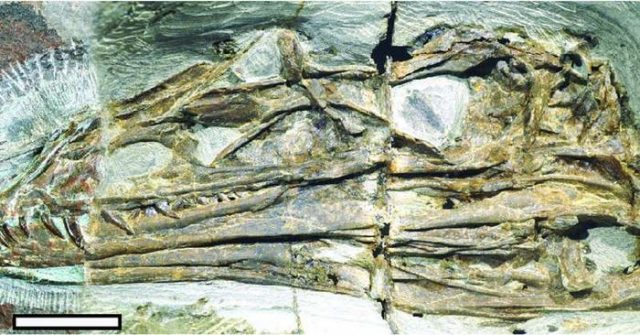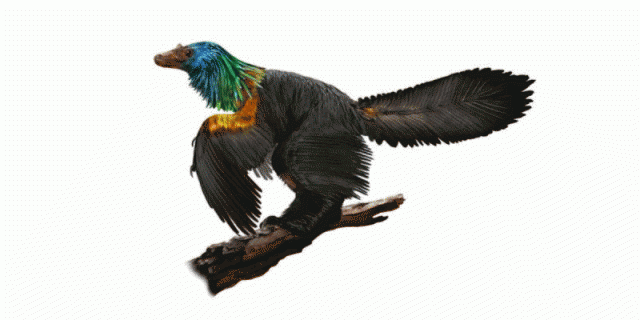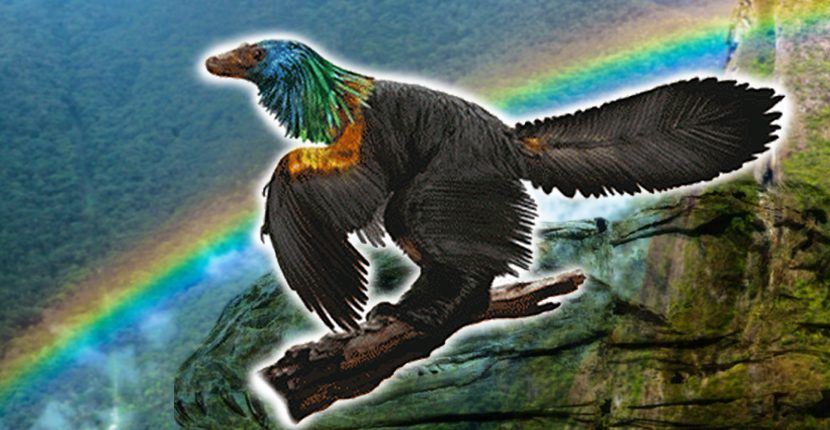We’re finding out that the world of dinosaurs was also a world of colors, and the latest discovery shared by scientists and paleontologists confirms it. The well-preserved remnants of a newly identified dinosaur found in China show evidence of iridescent rainbow colored feathers that would have shimmered just like those of a hummingbird.
The exquisite fossilized remains of this dinosaur were discovered by a farmer in China’s Hebei Province, near Beijing. Estimates suggest the species was alive approximately 161 million years ago, in the Jurassic era. It has been named Caihong juji, which means “rainbow with the big crest” in Mandarin.
The fossils were collected by the Paleontological Museum of Liaoning in 2014, and a closer look at the shape and patterns of the cell parts that carry the pigments indicates the presence of multicolored feathers.
“The preservation of this dinosaur is incredible–we were really excited when we realized the level of detail we were able to see on the feathers,” said Dr. Chad Eliason from Chicago’s Field Museum and one of the research team members. The findings, he says, reveal “a more colorful Jurassic World than we previously imagined!”
Such feathers would have adorned the bony crest on the heads of these dinosaurs, with more of them spreading down the neck and chest. The size of a duck, this tiny creature may have used its iridescent plumage for same reasons that peacocks use their tails today, to flirt and advertise their beauty to others.
Caihong juji had the type of feathers needed for flying, but scientists believe it probably didn’t fly. With its formidable crested head, it has a number of similarities to Velociraptor mongoliensis, another feathered dinosaur species that is known to have roamed Mongolia and was also unable to fly. That does not mean that both Caihong and Velociraptor had feathers just for decoration; their feathers likely fulfilled other practical functions, such as keeping the animal warm.

Living in forests, Caihong juji would have walked on its two legs while trying to find a delicious treat among the trees, perhaps a lizard or some tiny mammal. According to one of the study co-authors, paleontologist Xing Xu from the Chinese Academy of Science, this small carnivore would have weighed around a pound. The full research findings were published in the journal Nature Communications on January 15, 2018.
Scanning electron microscope analysis of the fossils has allowed scientists to collect the needed data and make comparisons with feathers belonging to modern-day birds. Hummingbird feathers are the closest match. Scientists were able to identify traces of melanosomes within the fossils, the organelle found in the cells of animals that contain color pigment, among other functions.
Even though the organic pigments that the melanosomes once contained have decayed, it was the fossilized imprint of the structure of the melanosomes parts, their pattern organization, which enabled scientists to identify similar traits to hummingbird feathers. This does not mean that scientists were able to trace back the colors exactly as they were on Caihong juji.

Reportedly, similar feathers have already been traced to other dinosaurs. Previous research in 2012 revealed that Microraptor, a dinosaur with four wings, had the same metallic sheen to its feathers. A huge difference, however, is that Microraptor lived some 40 million years after Caihong. That means, for now, Caihong remains the earliest known dinosaur that had feathers with a rainbow-like shimmer.
Moreover, Caihong appears to be one of the oldest animals documented to have had asymmetrical feathers, a trait that helps birds nowadays to keep a straight course while flying. They were a feature of Caihong’s large tail, while modern birds have them on their wing tips.
With a Velociraptor-like skull and a bird-body that was covered with feathers, Caihong juji assuredly appears as a type of dinosaur with some pretty fantastic traits. These research findings are particularly interesting, as they help scientists see how distinct animal traits developed in the evolution process.
